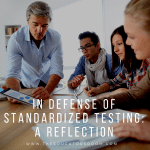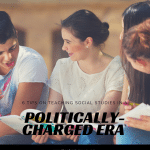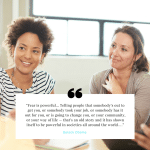Maybe my millennial is showing, but VH1’s “Watch and Discuss” campaign had an incredible impact on how I taught novels in my grade 8 standard ELA class. I wondered, what if I took the same concept and applied it to reading in English class? I made reading a novel as engaging as watching a VH1 reality TV series by:
- Keeping it episodic: reading a few engaging chapters or passages at a time
- Welcoming reactions: setting ground rules, but allowing students to have authentic reactions to the text
- Creating a Common Ground: reading the same chapters or passages together so we “watched the same show” at the same time
And it worked. VH1 inspired me to create “Read and Discuss.” Having students “read and discuss” novels together during class time with live, unfiltered reactions and questions created classroom community–in-person and virtually.
Read and Discuss Created A Common Ground
A reality that some ELA teachers have yet to accept is that there are students who simply will not read the book. No matter how many quizzes, assignments, projects, and essays you give there are some students who will not make it past the title page. And honestly, that’s ok.
There is a place for independent reading. I believe that it’s important that students complete some reading independently, but it can’t be the end all be all of the novel-reading strategies in the classroom. It’s inequitable.
Consider who is excluded when independent reading is the only reading completed. There are students who are unable to read at home for various reasons. When they are assigned reading at home that they did not complete, these students are eliminated from the conversation the next day in class. Sometimes life happens, and a student simply cannot complete the assigned reading. They shouldn’t be punished and alienated for matters out of their control. Even in college, there are classes where you read and discuss passages together aloud in class in addition to reading independently.
Read and Discuss welcomes students instead of excluding them. Reading together as a community gives students access to the text and the conversation. Voices that originally would have been left out now have the opportunity to be heard.
The Reactions Reinforced Good Reading Habits
I will never forget the time several years ago that a student screamed, “That bitch!” in the middle of reading chapter 25 of Walk Two Moons. If you’re familiar with the antics of Phoebe Winterbottom, then you know exactly what chapter I am referring to. I told the student, “I agree with the sentiment, but let’s use more appropriate language.” Reading the novel together, students have the opportunity to react and see their classmates’ reactions in real-time. When you read independently you may have those same reactions, but you miss the feeling of seeing what everyone thinks too and the discussion that comes with it.
Reading together—whether aloud or collectively listening to the audiobook— facilitates deeper discussion and reinforces good reading habits. Students ask questions, make comments, share ideas, thoughts, opinions, and feelings. This encourages other students to do the same because they see it’s ok to do so. Students see firsthand that reading is so much more comprehension and analysis. It’s more than just the author, characters, and plot. They see that reading actively includes them. Their reactions and opinions about the text are just as valid as the text itself.
Read and Discuss Empowered Student Voice
While teaching virtually, I created an activity called “React in the Chat ” while my students and I listened to the The Stars Beneath Our Feet audiobook. What I found is that students would pose questions or make comments. Then their peers would respond to them before I could even finish typing. They were leading their own conversations about the text without my need to facilitate and it was incredible!
Reading novels together as a classroom community empowers students to use their voices. Seeing that it’s ok to share their ideas, empowers them to actually do so. Being able to challenge the text, their peers’ or teacher’s ideas during discussion allows them to stand behind and support their own ideas. Students also become leaders. They help each other navigate the text by clarifying understanding, answering each other’s questions, and tapping into each other’s knowledge and experiences. Soon students began arguing over our class novels the way that they did television shows.
Thank You, VH1!
Reading novels creates an extraordinary opportunity for adventure, but my students made it clear that they did not feel the same way. That challenged me to figure out how to make reading an engaging experience for them. With the help of VH1, I think I changed their minds.






